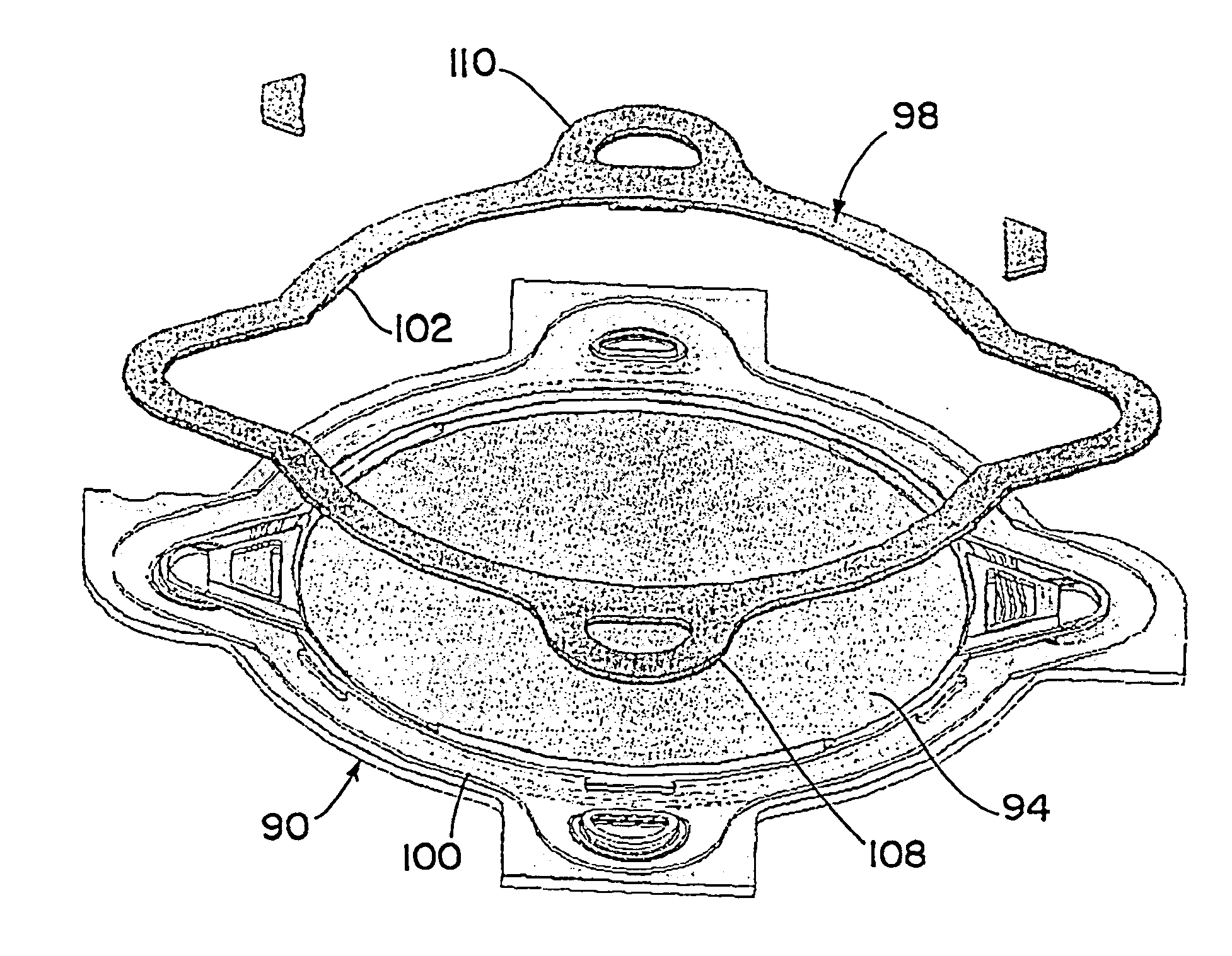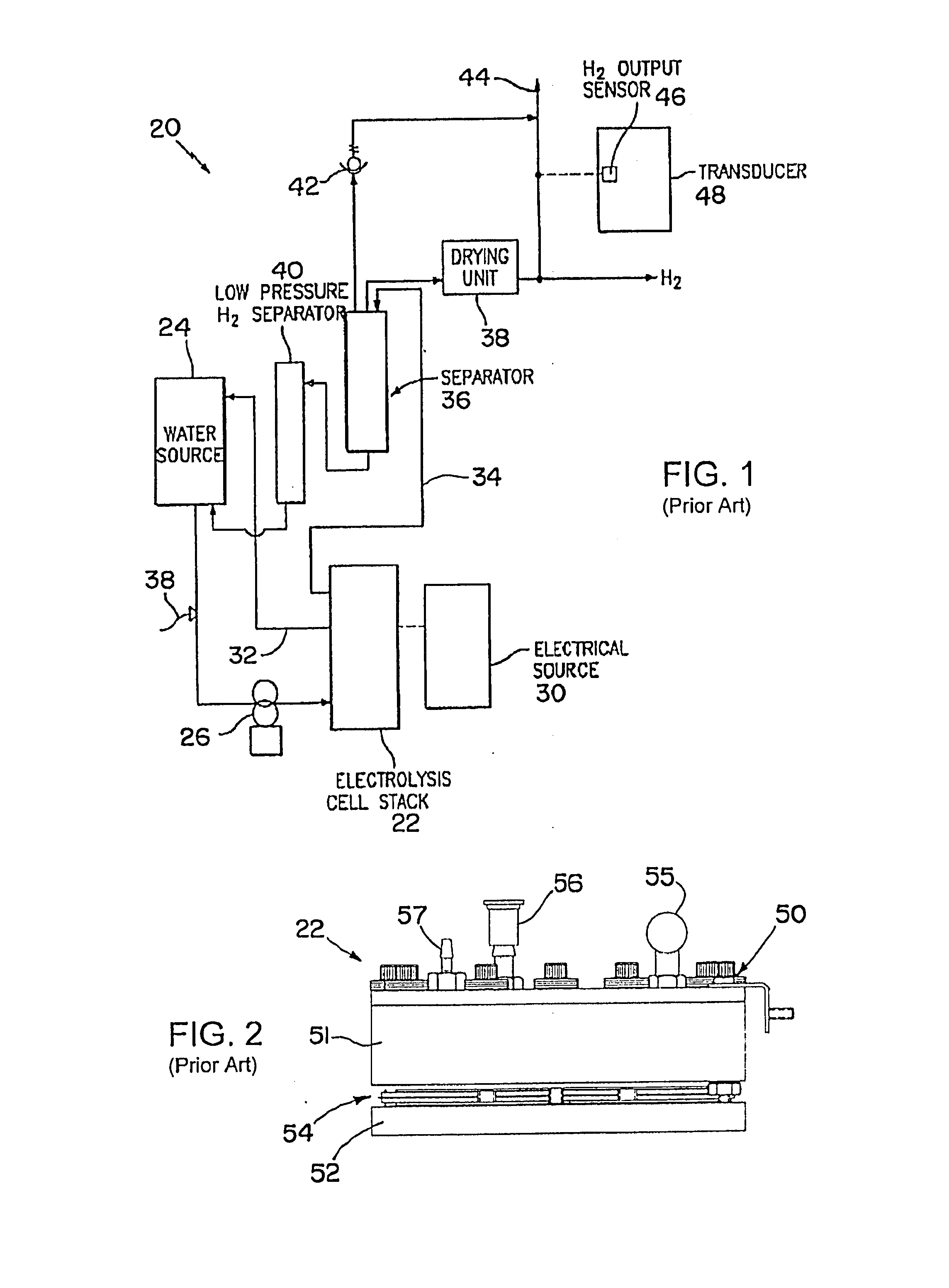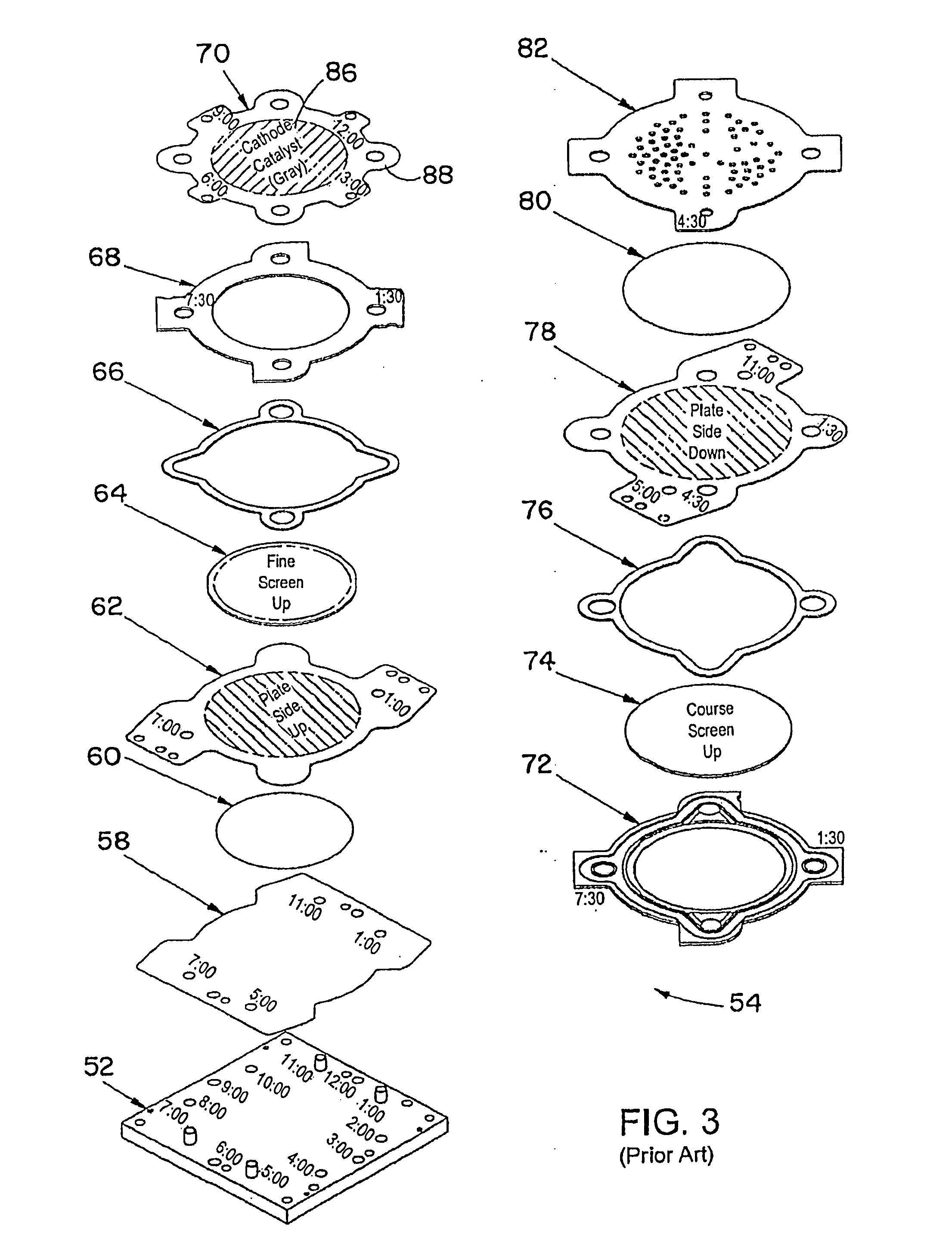Electrolytic cell stack with proton exchange membrane interlock sealing gasket
- Summary
- Abstract
- Description
- Claims
- Application Information
AI Technical Summary
Benefits of technology
Problems solved by technology
Method used
Image
Examples
Embodiment Construction
[0031]Referring now in detail to the drawings and initially to FIG. 1, an exemplary gas generator system is indicated generally by reference numeral 20. The illustrated system 20 is suitable for generating hydrogen for use as a fuel or for various other applications. While the improvements described below are described in relation to an electrolytic cell, the improvements are applicable to electrolytic cells, fuel cells, and the like. Furthermore, although the description and figures are directed to the production of hydrogen and oxygen gas by the electrolysis of water and will be described chiefly in this context, the apparatus is applicable to the generation of other gases from other reactant materials.
[0032]The system 20 includes a water-fed electrolytic cell stack 22 capable of generating hydrogen gas from reactant water. The reactant water utilized by system 20 is supplied from a water source 24 and is fed by gravity or pumped through a pump 26 into the electrolytic cell stack ...
PUM
| Property | Measurement | Unit |
|---|---|---|
| Pressure | aaaaa | aaaaa |
| Perimeter | aaaaa | aaaaa |
Abstract
Description
Claims
Application Information
 Login to View More
Login to View More - R&D
- Intellectual Property
- Life Sciences
- Materials
- Tech Scout
- Unparalleled Data Quality
- Higher Quality Content
- 60% Fewer Hallucinations
Browse by: Latest US Patents, China's latest patents, Technical Efficacy Thesaurus, Application Domain, Technology Topic, Popular Technical Reports.
© 2025 PatSnap. All rights reserved.Legal|Privacy policy|Modern Slavery Act Transparency Statement|Sitemap|About US| Contact US: help@patsnap.com



